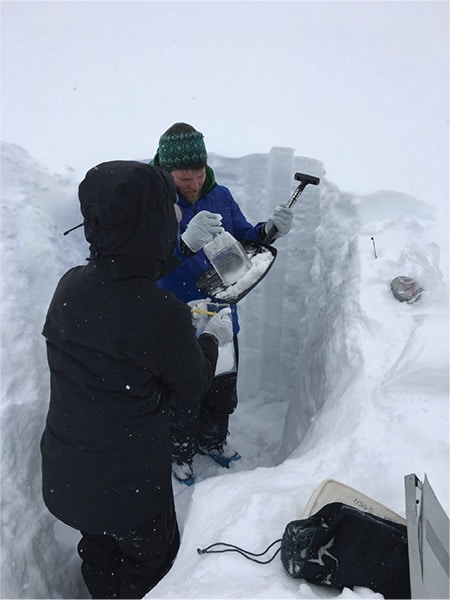This post was originally published on Eco Watch
A team of researchers from the Desert Research Institute, U.S. Geological Survey (USGS), the University of Nevada, Reno and Portland State University has discovered contamination in the snow across the Rocky Mountains.
The researchers analyzed seasonal snowpack samples from 2018 that were collected across 49 sites around the Rocky Mountains to determine levels of metals such as mercury, zinc, cadmium and antimony.
As part of the study, the team looked at metals found in natural dust as well as metals found in dust from human activities, such as mining. By investigating the metal contaminant levels in both natural dust and human-caused dust, the researchers connected particular metal contamination levels to human activities.
The study, published in the journal Environmental Pollution, revealed higher metal contamination levels in snow of the northern Rocky Mountains and sites in Montana, Idaho and northern Wyoming.
They then compared and confirmed their findings using the data from the National Atmospheric Deposition Program, which monitored the levels of mercury and calcium in precipitation from 2009 to 2018.
The research team collecting snow samples in the Rocky Mountains in the spring of 2018. DRI
“The snow samples showed us that contamination is higher in the northern Rockies, and that was really interesting,” Monica Arienzo, associate research professor of hydrology at Desert Research Institute, said in a statement. “Looking at mercury contamination over time helped us say that 2018 is not just a fluke. When you start to see these trends that are consistent between different records, it makes you feel more confident that something’s really happening here.”
The study determined that the cadmium, mercury, antimony and zinc found at higher levels in the northern sites were likely from human activity, particularly mining and smelting.
“Our idea is that the dust from current and historical mining sites gets carried up into the mountains and deposited across our study sites,” Arienzo said. “This study shows the importance of continued scientific monitoring efforts, like the long-term USGS datasets we used here, as well as mitigation of current and historical mining sites.”
Based on the results of this research, the study authors recommended that officials and industry experts should focus on monitoring and mitigating contamination from active mining and smelting sites, while former sites should be remediated for contamination. Limiting further contamination and cleaning up existing pollution is especially important, as more than 60 million people rely on the water runoff from Rocky Mountain snow, the study authors wrote.
Moving forward, the research team will compare these results to ongoing tree ring research in the area to get a more comprehensive look at how pollutants like mercury can spread and affect the environment.
The post Snow in Rocky Mountains Found to Be Contaminated With Metals appeared first on EcoWatch.




0 Comments